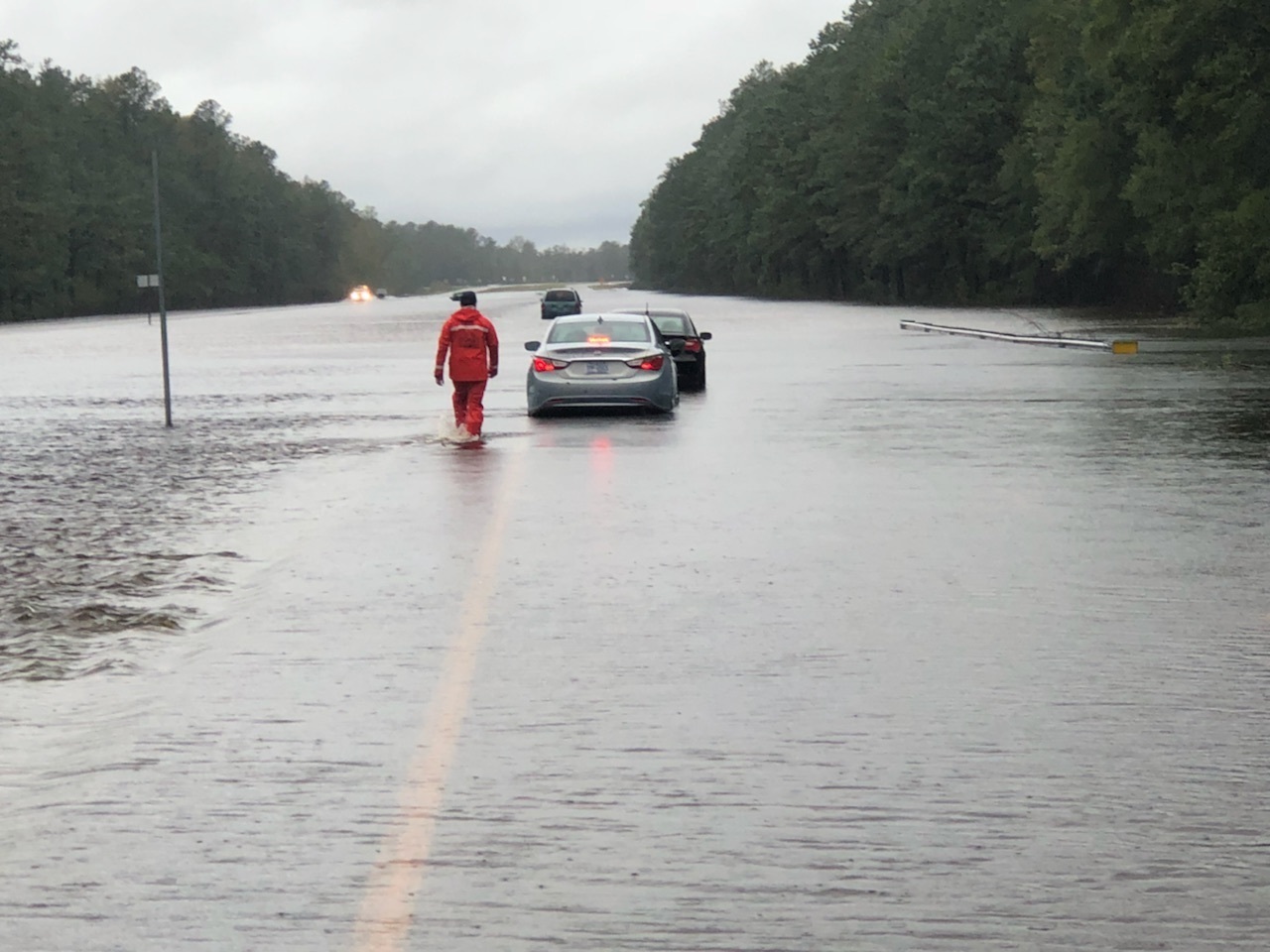
Plans for legislation to deal with riverine flooding and improve flooding resiliency are moving forward in the North Carolina General Assembly this month, with a major review of policy and funding needs planned for next week.
Last week, Sens. Danny Britt, R-Robeson, and Jim Perry, R-Lenoir, co-chairs of a new committee set up to tackle the issue, announced that they are working on a new flood mitigation and resiliency bill to develop a comprehensive, statewide approach.
Supporter Spotlight

In an interview Monday with Coastal Review, Perry said the committee will work during the next month gathering information and looking at strategies, but ultimately, he and Britt want to see a focused effort on flooding with a single agency assigned to put mitigation plans into action. He said there are now “too many chefs” with multiple agencies and administrators involved and no comprehensive plan.
“Somebody’s got to take this master plan and execute it,” he said. “Right now, we’ve got a lot of information, a lot of good ideas, but we’re sort of scattered in our approach. Somebody’s got to be in charge to drive the execution or we’re going to end up with a patchwork.”
The Senate Select Committee on Storm Related River Debris and Damage in North Carolina is scheduled to hear a series of presentations at 10 a.m. April 13 in the auditorium of the Legislative Building.
The event will be live-streamed. Information on the committee and the livestream link is at https://www.ncleg.gov/Committees/CommitteeInfo/Senate/1163#.
The agenda includes an update from the leadership of the North Carolina Policy Collaboratory on an ongoing study of flood resiliency; a report on nature-based flood mitigation from North Carolina Coastal Federation Executive Director Todd Miller; a review of the Resilient Coastal Communities Program from Division of Coastal Management Director Braxton Davis; reports on flood-mitigation projects from North Carolina Land and Water Fund Executive Director Walter Clark and Division of Mitigation Services Director Tim Baumgartner; and stream debris removal updates from Division of Soil and Water Conservation Director Vernon Cox.
Supporter Spotlight
Although some strategies and proposals differ, there is broad consensus among legislative leadership and Gov. Roy Cooper on the need for the state to step up its mitigation and resiliency efforts.
Last month Cooper proposed $56 million for additional flood resiliency efforts along with a hefty increase in funding for the Land and Water Fund to increase grants for flooding-related projects in local communities.
Fisheries bills cast
After running into opposition in the House last year, Sen. Norm Sanderson, R-Pamlico, is trying again to land his marine fisheries management reform bill.

Sanderson’s bill cleared the Senate last year with virtually no opposition, but hit a snag in the House, which had its own version of the legislation. Neither became law, but Sanderson said the new bill should fare better.
Sanderson said most of Senate Bill 317, which adopts a new set of procedures for developing fishery management plans and expands inspection authority, was requested by the Division of Marine Fisheries.
The bill passed the Senate Thursday 45-3, with Perry and Sens. Vickie Sawyer, R- Iredell, and Tom McInnis, R- Richmond, opposed.
Another fisheries-related bill clearing the Senate last week was Senate Bill 296, which directs the North Carolina Policy Collaboratory to study the overall status of all fisheries regulated by the state.
The bill, introduced by Sen. Michael Lee, R-New Hanover, and approved 48-0, seeks to look at the health and extent of habitats for bay scallop, blue crab, eastern oyster, estuarine striped bass, hard clam, kingfishes, red drum, river herring, sheepshead, shrimp, southern flounder, spotted seatrout and striped mullet.
Boating enforcement
Sanderson also added New Bern, Bridgeton, Oriental and Trent Woods to the growing list of municipalities being granted authority over navigable waters within their municipal limits and extraterritorial jurisdictions.
Sanderson told a Senate committee last week that the towns needed the expanded authority to deal with problems caused by boaters not following the rules.
Sanderson said the state doesn’t have enough officers with the Wildlife Resources Commission and Division of Marine Fisheries to handle all enforcement needs.
“There’s just not enough of them to go around to cover all the coast,” Sanderson said. “We have bad actors that come into these towns and usually these are in marinas that are adjacent to the town or even sometimes in the waterfronts. They don’t follow the rules and they create an unsafe environment for other people who are there to enjoy the coast. This will allow a local police officer to write someone a citation if they come in and they are operating in an unsafe manner.”
Flurry of PFAS bills
A group of House and Senate Democrats are calling for a comprehensive study of per- and polyfluoroalkyl substances, or PFAS, in the Cape Fear River and elsewhere, requirements for polluters to pay for cleanup and mitigation, and new drinking water standards for PFAS and several other contaminants.
The proposals are outlined in three bills introduced last week. Senate Bill 460 would create a PFAS task force for the lower Cape Fear River to look at sources and health impacts. Senate Bill 443 would require the Commission for Public Health to establish maximum contaminant levels for PFAS and compounds known as perfluorooctanoic acid, or PFOA, perfluorooctanesulfonic acid, or PFOS, hexavalent chromium and 1,-4-dioxane.
House Bill 444 would require those found to be responsible for discharge of PFAS, including Chemours Co.’s product GenX, to a public water system to pay for the cost to “remove, correct, or abate any adverse effects” of the contamination.







